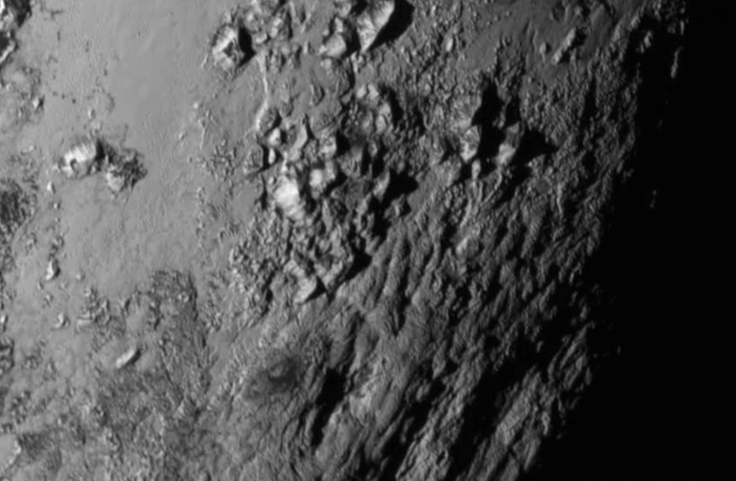Nasa reveals stunning high-resolution images of Pluto's surface

Vast mountains of ice and evidence of possible geological activity have been discovered on dwarf planet Pluto, Nasa announced on 15 July, as it released the first high-resolution images of Pluto's surface.
The incredible images were captured by the space agency's New Horizons probe, which beamed them 3 billion miles back to earth on 14 July after making a historic flyby of Pluto.
Zoom into Pluto & discover mountains, seen during yesterday's @NASANewHorizons #PlutoFlyby: http://t.co/6QLXLxiW0o
https://t.co/toJQ0j7wB6
— NASA (@NASA) July 15, 2015The "amazing results" returned by the probe include a new, sharp view of Pluto's largest moon, Charon, and evidence that areas of Pluto may still be geologically active.
"Home run!" said New Horizons chief scientist Alan Stern. "New Horizons is returning amazing results already. The data look absolutely gorgeous, and Pluto and Charon are just mind blowing."
"We now have an isolated, small planet that's showing activity after 4.5 billion years," Stern said, adding that the discovery would "send a lot of geophysicists back to the drawing boards."
Close-up images of Pluto's equatorial region show a mountain range with peaks jutting as high as 11,000 feet (3,500 metres), with scientists estimating that the mountains were formed no more than 100 million years ago.
This suggests that areas of the region - which covers around one percent of the surface of the rock - could still be active.
"This is one of the youngest surfaces we've ever seen in the solar system," said Jeff Moore of the New Horizons Geology, Geophysics and Imaging Team.
Remarkable images
The spacecraft had already sent over remarkable images of the previously mysterious dwarf planet, revealing a distinctive heart-shaped region near its equator and several impact craters on the surface.
The region has now been named after American astronomer Clyde Tombaugh, who discovered the dwarf planet in 1930.
Scientists suspect Pluto, Charon and their four small moons, all discovered in Hubble images after New Horizons launched, formed after an ancient collision of two icy bodies 4.6 billion years ago.
Launched in January 2006, New Horizons is the first spacecraft to visit Pluto. The flyby marks a historic moment in space exploration and means all nine major planetary objects in the solar system have now been visited at least once by a human probe.
© Copyright IBTimes 2025. All rights reserved.





















